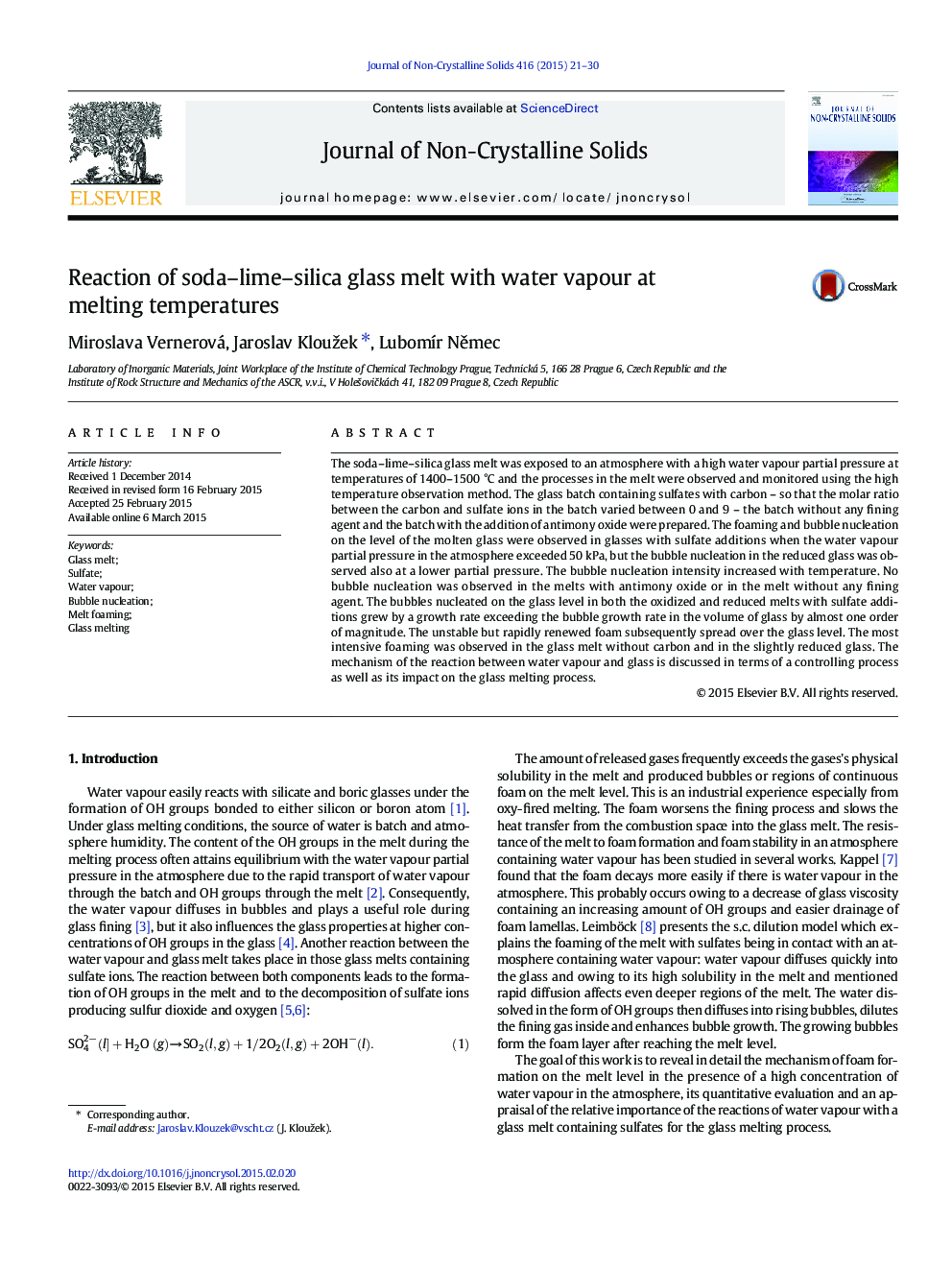| کد مقاله | کد نشریه | سال انتشار | مقاله انگلیسی | نسخه تمام متن |
|---|---|---|---|---|
| 1480751 | 1510426 | 2015 | 10 صفحه PDF | دانلود رایگان |
• Interaction of water vapour and NCS glass containing sulfur compounds was studied.
• Bubble nucleation was found on the level of both oxidized and reduced melts.
• High bubble growth rate on the melt level was determined and melt foaming was observed.
• Mechanism of interaction was proposed utilizing sulfate transport by surface forces.
The soda–lime–silica glass melt was exposed to an atmosphere with a high water vapour partial pressure at temperatures of 1400–1500 °C and the processes in the melt were observed and monitored using the high temperature observation method. The glass batch containing sulfates with carbon – so that the molar ratio between the carbon and sulfate ions in the batch varied between 0 and 9 – the batch without any fining agent and the batch with the addition of antimony oxide were prepared. The foaming and bubble nucleation on the level of the molten glass were observed in glasses with sulfate additions when the water vapour partial pressure in the atmosphere exceeded 50 kPa, but the bubble nucleation in the reduced glass was observed also at a lower partial pressure. The bubble nucleation intensity increased with temperature. No bubble nucleation was observed in the melts with antimony oxide or in the melt without any fining agent. The bubbles nucleated on the glass level in both the oxidized and reduced melts with sulfate additions grew by a growth rate exceeding the bubble growth rate in the volume of glass by almost one order of magnitude. The unstable but rapidly renewed foam subsequently spread over the glass level. The most intensive foaming was observed in the glass melt without carbon and in the slightly reduced glass. The mechanism of the reaction between water vapour and glass is discussed in terms of a controlling process as well as its impact on the glass melting process.
Journal: Journal of Non-Crystalline Solids - Volume 416, 15 May 2015, Pages 21–30
